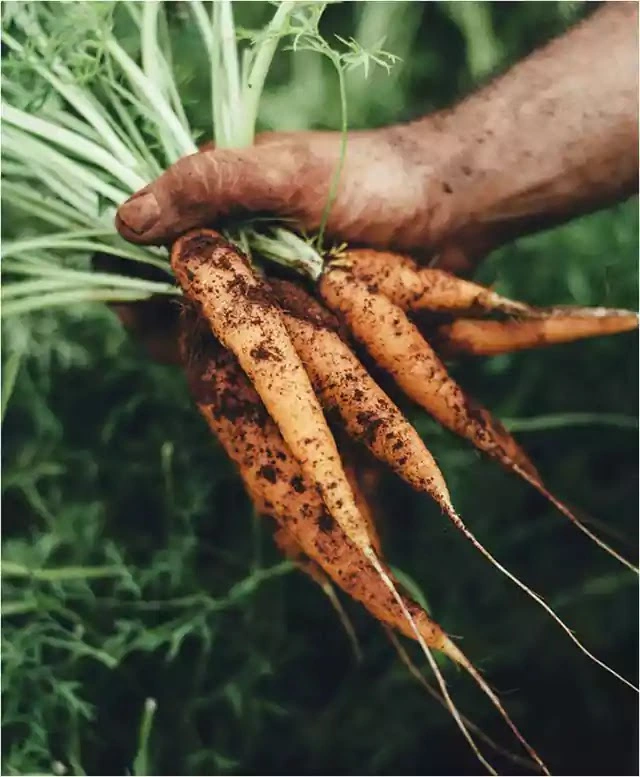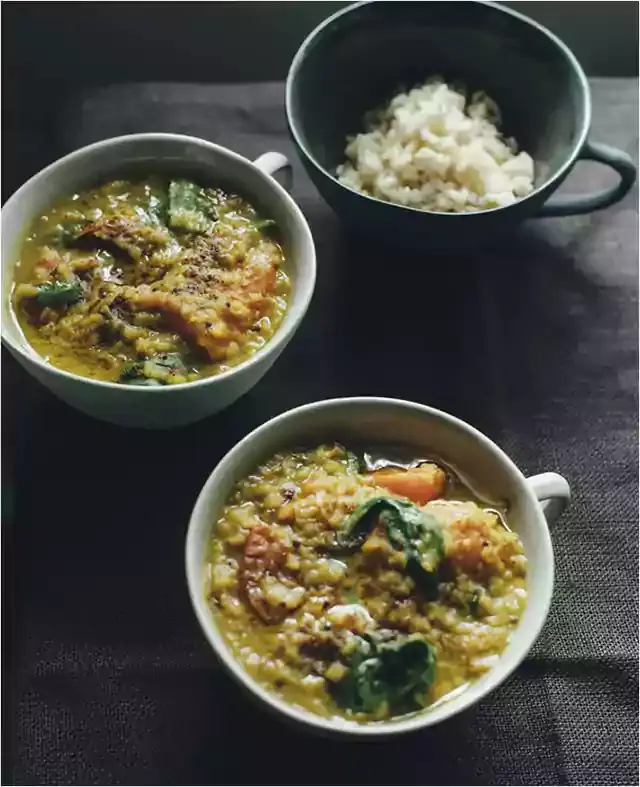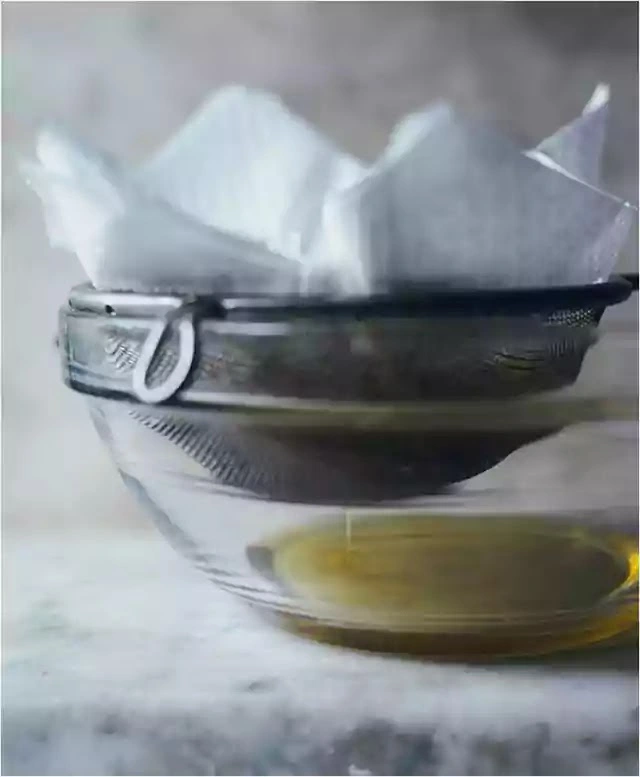Introduction: Finding Comfort in the Culinary Embrace
In the ebb and flow of life’s uncertainties, there exists a sanctuary at our dinner tables—a place where the chaos of the day subsides, and unsettled souls find respite. This blog post invites you to explore the emotional journey woven into the fabric of “Dinner Foods that Ground for Unsettled Days.” Beyond mere nourishment, these culinary companions offer solace, turning every bite into a moment of grounding. Join us as we delve into the heartwarming world of dinners that go beyond sustenance, providing a haven for those seeking comfort in the midst of life’s storms.

Edamame with chilli and garlic
- 250 g frozen shelled edamame
- 1 tablespoon ghee
- 1 garlic clove, chopped
- 2 small dried red chillies, torn
- 1 tablespoon tamari
Cook the edamame in a saucepan of boiling water for 5 minutes, until bright green and tender. Drain well.
Heat the ghee in a frying pan, add the garlic and chilli and cook over medium heat for 2 minutes.

Add the edamame, dried chillies and tamari and toss quickly to coat in the sauce.Serves 4
Steamed vegetables with miso tahini cream
This is my staple dinner. I know that might seem really odd but my job demands I sample a lot of different flavours, so when I am left to choose my favourite meal, I will always pick steamed vegetables. If I am really hungry or have a sweet craving, I might add a cob of corn. If I have a cold, I’ll add some cauliflower. In summer I’ll squeeze on some lemon juice and drizzle olive oil over. In winter I’ll grate on some parmesan and warm up the vegetables with a generous crack of pepper
- 2 carrots, cut into thick slices
- 300 g sweet potato, cut into thick slices
- 1 daikon radish, cut into thick slices
- 200 g broccolini, trimmed
- 6 asparagus spears, woody ends trimmed
- 200 g green beans, stalks trimmed
Miso tahini cream
- 3 tablespoons hulled tahini
- 1 tablespoon shiro miso
- 1 tablespoon lime juice
- 1 tablespoon toasted sesame seeds
- 1 tablespoon tamari
- 1 teaspoon sesame oil
Put the carrot, sweet potato and daikon in a single layer in a large steamer, cover with a lid and steam over a saucepan of simmering water for 15–20 minutes, until the vegetables are just soft. Add the broccolini, asparagus and green beans and cook for 5 minutes more, until they are bright green and tender.
To make the miso tahini cream, whisk together the tahini, miso, lime juice, sesame seeds, tamari and sesame oil, then add just enough warm water to thin the dressing until smooth and creamy.
Serve bowls of the steamed vegetables with the dressing drizzled over the top.Serves 4
Chicken and egg donburi
Japanese mothers feed donburi to their children when they are not feeling well. There is something incredibly nourishing about an Asian-style omelette served over rice
- 200 g (1 cup) basmati rice
- 310 ml (1¼ cups) dashi stock or chicken stock
- 2 tablespoons tamari
- 1 tablespoon coconut sugar
- 300 g free-range chicken thigh fillets, chopped
- 3 spring onions, sliced, plus extra to garnish
- 4 free-range eggs
- 1 tablespoon toasted sesame seeds
Wash the rice in a sieve until the water runs clear. Put into a saucepan with 500 ml (2 cups) of water and bring to the boil. Cook over high heat until tunnels appear in the rice. Cover with a tight-fitting lid, reduce the heat to as low as possible and cook for 10 minutes, until the water has been absorbed and the rice is tender. Turn off the heat and let the rice sit for 5 minutes, then fluff with a fork to separate the grains. Alternatively, put the rice into a rice cooker, add 2 cups (500 ml) of water and turn the rice cooker on.
Put the stock, tamari and sugar into a large saucepan and stir over low heat until the sugar dissolves. Bring to the boil, without stirring, then reduce the heat to low. Add the chopped chicken and simmer for 5 minutes, until just cooked. Add the spring onion and cook for 1 minute.
Lightly mix the eggs, without beating, and pour into the pan around the chicken in a steady stream, without stirring. Cook for 5 minutes, until the egg around the edge of the pan starts to bubble. Gently stir once, cover and cook for 5 minutes, until the egg is almost set.
Divide the rice between four serving bowls and carefully spoon on a portion of the chicken and egg mixture. Sprinkle with the sesame seeds and extra spring onion.Serves 4
Celeriac and parsnip soup
Celeriac is one of those vegetables most people steer clear of because it is a bit of a mystery. Its bulbous quality makes it extremely grounding and when combined with parsnip makes the perfect soup for cold, windy days. The green tea buckwheat soba noodles used here add a lovely flavour and colour and are warming and gentle on the digestive system. If you have trouble finding them, just use buckwheat soba noodles
- 1 tablespoon olive oil
- 1 tablespoon ghee
- 1 leek, pale part only, washed well and thinly sliced
- 1 celeriac bulb, peeled and chopped
- 2 parsnips, peeled and chopped
- 1.5 litres (6 cups) chicken stock, preferably homemade
- 1 bay leaf
- 50 g green tea buckwheat soba noodles
- 50 g frozen shelled edamame
- ½ teaspoon sesame oil
- pinch of chilli flakes
- 2 tablespoons fried onion flakes
Heat the oil and ghee in a large saucepan over medium heat, add the leek and cook, stirring occasionally, for 10 minutes, until soft and golden. Stir in the celeriac and parsnip and cook for 10 minutes, until the vegetables start to soften.
Add the stock and bay leaf to the pan and bring to the boil. Reduce the heat to low and simmer for 40 minutes, until the vegetables are very soft. Remove the bay leaf. Blend the soup until smooth.
Cook the noodles and edamame in a large saucepan of boiling water until tender. Drain and rinse under cold water, then drain well. Add the sesame oil, chilli and onion flakes and toss to combine.
Divide the soup between four serving bowls, top with a mound of noodles and serve.Serves 4–6



Kitchari
- 200 g (1 cup) basmati rice
- 225 g (1 cup) split mung beans (moong dal)
- 2 tablespoons ghee
- 1 teaspoon cumin seeds
- 1 onion, finely chopped
- 1 small garlic clove, chopped
- ½ teaspoon grated fresh ginger
- ½ teaspoon grated fresh or ¼ teaspoon ground turmeric
- 1 carrot, grated
- 1 zucchini, grated
- 1 tablespoon chopped coriander leaves
- juice of 1 lemon
- pinch of sea salt
Soak the rice and split mung beans in cold water for 2 hours, rinse and drain.
Melt the ghee in a large saucepan over medium heat, add the cumin and cook for 1 minute. Stir in the onion, garlic, ginger and turmeric and cook for 5 minutes, until the onion is soft and golden. Add the carrot and zucchini and cook for 5 minutes.
Add the rice, beans and 1.25 litres (5 cups) of water to the pan and bring to the boil. Cook over high heat until tunnels appear in the surface of the rice, reduce the heat to low and simmer for 15 minutes, until the rice and beans are soft and slightly mushy.
Stir in the coriander and lemon juice and season with salt.Serves 4
Pumpkin and spinach dhal
- 285 g (1¼ cups) split mung beans (moong dal) or red lentils
- 1 tablespoon finely grated fresh ginger
- 1 teaspoon ground turmeric
- 1 teaspoon black mustard seeds
- 1 teaspoon garam masala, plus extra for sprinkling
- 1 small dried red chilli
- 1 bay leaf
- 6 curry leaves
- 1 teaspoon sea salt
- ½ tablespoon coconut oil
- 100 g cherry tomatoes, halved
- 1½ tablespoons ghee
- 1 tablespoon lemon juice
- 155 g (1 cup) roast chopped pumpkin
- 100 g baby spinach leaves
- 200 g (1 cup) basmati rice
- lemon wedges, to serve
Put the split mung beans or lentils, ginger, spices, chilli, bay leaf, curry leaves, salt, oil and cherry tomatoes into a large saucepan, add 875 ml (3½ cups) of water and bring to the boil over medium heat. Reduce the heat to low and simmer for 20 minutes, until the beans or lentils are just soft. Don’t overcook them, you don’t want them to be mushy.
Remove the pan from the heat, stir in 2 teaspoons of the ghee, the lemon juice, pumpkin and spinach, sprinkle with the extra garam masala, cover with a lid and allow to stand for 5 minutes.
Meanwhile, wash the rice in a sieve until the water runs clear. Put the rice in a saucepan with 500 ml (2 cups) of water and the remaining ghee, bring to the boil and cook over high heat until tunnels appear in the rice. Cover with a tight-fitting lid, reduce the heat to as low as possible and cook for 10 minutes, until the water has been absorbed and the rice is tender. Turn off the heat and let the rice sit for 5 minutes, then fluff with a fork.
Serve the dhal with lemon wedges and the basmati rice.Serves 4



Ghee
Ghee (clarified butter) is one of the major ingredients in Ayurvedic cooking. It is said to rekindle the digestive fire, making it perfect for anyone with a weak digestive system.
Modern science has discovered that ghee contains phenolic antioxidants that support the immune system. When I studied Ayurveda, my gorgeous teacher Dr Ajit used to say if you didn’t know what to give someone, just give them ghee. Having said that, people with a Kapha constitution need to use it in moderation. I use ghee to help calm me down and add a little to warm drinks on cold, windy days. It tastes so yummy in warm milk with cinnamon and cardamom, stirred through warm quinoa porridge or added to rice before you cook it or … I could go on forever. And just before I finish, know that ghee is the difference between a good and a great dhal.
- 250 g organic unsalted butter
Melt the butter in a saucepan over low heat. You will notice as it melts that a white foam settles on the surface – these are the milk solids. When I am being finicky, I like to skim this foam off using a spoon, but if I am in a rush, I leave it and strain it out at the end.
Continue cooking the butter until the shape of the bubbles on top changes and then stops altogether; this usually takes about 5–10 minutes. The ghee will smell nutty and when you tilt the pan you will see the milk solids on the base have turned golden brown, giving the ghee a wonderful flavour.
Allow the melted butter to cool slightly for a couple of minutes. Line a stainless steel sieve with paper towel or an unused Chux cloth and place over a bowl. Strain the melted butter into the bowl. You will be left with clarified butter – better known as ghee. Store in a sterilised glass jar or metal tin. The ghee will solidify as it cools.
Use ghee in any place you would use butter or oil. It withstands higher temperatures than butter because the clarifying process removes all the impurities.Makes about 200 g
Indian vegetable and cashew curry
I find a curry is always better the next day or made a few hours ahead of time and allowed to rest. In winter, I lean towards tomato-based curries and in summer, coconut-based curries. If I have time, I roast my spices, then grind each one separately – it makes a world of difference to the flavour of the dish. I accompany my winter curry with a spicy mango chutney and eggplant pickle
- 2 tablespoons ghee
- 1 red onion, finely chopped
- 1 teaspoon ground cumin
- 1 teaspoon ground coriander
- 1 teaspoon turmeric
- ½ teaspoon chilli powder
- 1 teaspoon garam masala
- 6 fresh curry leaves
- 1 carrot, thickly sliced
- 300 g pumpkin, cut into cubes
- 2 zucchini, sliced
- 1 red capsicum, chopped
- 200 g cauliflower, cut into florets
- 40 g (¼ cup) raw cashews, plus extra to serve
- 400 g can chopped tomatoes
- 130 g (½ cup) plain yoghurt
- steamed brown rice, to serve
Heat the ghee in a large saucepan over medium heat, add the onion and cook, stirring occasionally, for 10 minutes, until soft and golden. Add the spices and cook until fragrant. Stir in the vegetables, cashews, tomatoes and 250 ml (1 cup) of water, turn the heat to low, cover and simmer for 20 minutes. Remove the lid and simmer for 15 minutes, until the vegetables are soft.
Remove from the heat and stir the yoghurt into the curry. Sprinkle on the extra cashews and serve with the brown rice.Serves 4–6
Steamed greens with nori and spiced almond salt
I eat this as a meal, but you can serve these vegetables as an accompaniment, too. This recipe makes more of the spiced almond salt than you will need for one serve of vegetables. Store leftovers in an airtight jar for up to 2 weeks.
- 1 bunch of bok choy, trimmed
- 1 bunch of Chinese broccoli (gai larn), trimmed
- 1 bunch of broccolini, trimmed
- 200 g snow peas
- 60 g (1 cup) frozen shelled edamame
- 1 nori sheet, cut into thin strips
- 40 g (¼ cup) chopped blanched almonds
- 2 tablespoons linseeds (flaxseeds)
- 1 teaspoon sea salt
- ¼ teaspoon chilli flakes
- ½ teaspoon Chinese five-spice
- cracked white pepper
- ghee, to serve
Place the Asian greens, broccolini, snow peas and edamame in a steamer basket over a saucepan of simmering water, cover and steam for 5 minutes, until bright green and tender.
Pound half of the nori, the almonds, linseeds, salt, chilli flakes and five-spice in a mortar and pestle to form a crunchy salt.
Sprinkle the spiced salt over the greens. Finish by sprinkling on the rest of the nori, the white pepper and a dollop of ghee.Serves 2 as a meal or 4 as a side.
To delve deeper, watch the video.





GIPHY App Key not set. Please check settings